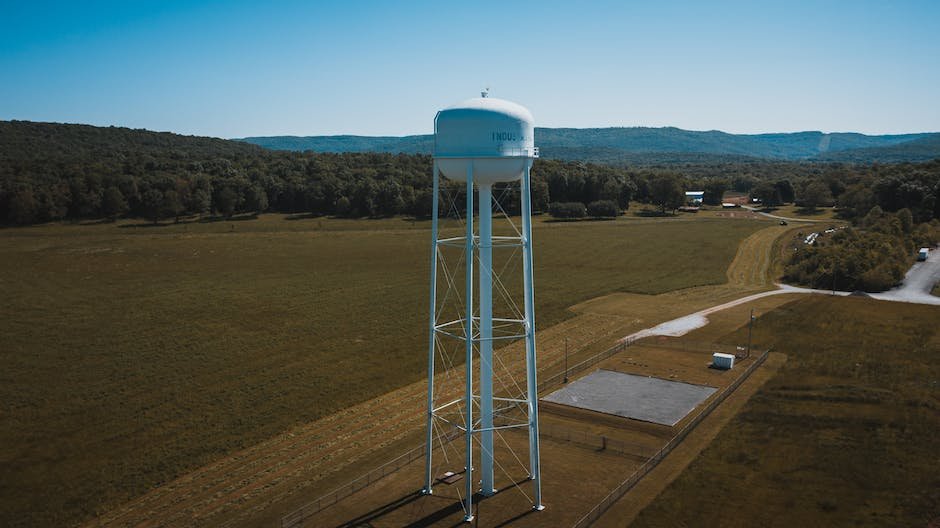Now Reading: How to Make Your Own Off-Grid Solar Panels
-
01
How to Make Your Own Off-Grid Solar Panels

How to Make Your Own Off-Grid Solar Panels
Harnessing the sun’s abundant energy and breaking free from the shackles of the conventional power grid has always been a tantalizing dream for the environmentally conscious. Picture this: batteries diligently charging with sunlight during the day, supplying electricity to your humble abode even after the sun finds solace behind the horizon. If you crave self-sufficiency and yearn to reduce your carbon footprint, then it’s time to unleash your inner adventurer and learn how to fabricate your very own off-grid solar panels. No longer will you be beholden to soaring energy bills or fossil fuel dependency, as we embark on an electrifying journey to master the art of harnessing the sun’s boundless power. So gather your tools, ignite your curiosity, and let us dive headfirst into the realm of self-sustainability, where ingenuity and sunlight unite to illuminate the path towards a greener future.
Table of Contents
- Introduction: Harnessing Solar Power for Off-Grid Energy Independence
- Building Your Off-Grid Solar Panel System: An Overview
- Selecting the Right Equipment: Key Components for Optimal Efficiency
- Step-by-Step Guide: Assembling and Installing Your DIY Off-Grid Solar Panels
- Maintenance and Expansion: Ensuring Longevity and Scaling Your Off-Grid System
- Q&A
- Concluding Remarks

Introduction: Harnessing Solar Power for Off-Grid Energy Independence
Solar power is revolutionizing the way we generate energy, providing an unparalleled opportunity for off-grid energy independence. With the abundance of sunlight that bathes our planet every day, harnessing solar power is a sustainable and environmentally friendly choice. By capitalizing on this renewable resource, individuals and communities can break free from the constraints of traditional energy sources and enjoy the benefits of self-sufficiency.
One of the key advantages of solar power is its versatility. Whether you live in a remote area, a bustling city, or somewhere in between, solar panels can be easily installed to meet your energy needs. Off-grid solar power systems are designed to function with minimal reliance on traditional power grids, making them ideal for remote locations where access to electricity is limited or nonexistent. By investing in solar power, you can enjoy the freedom to generate your energy and break free from the ever-increasing costs of electricity.
Another compelling aspect of solar power is the minimal maintenance required. Once installed, solar panels typically require little attention. This low-maintenance aspect makes solar power an attractive option for those seeking a hassle-free and long-term energy solution. Additionally, solar power offers the peace of mind of consistent energy production, regardless of external factors such as fuel availability or price fluctuations.
Embracing solar power for off-grid energy independence is not only a practical choice; it is a sustainable one. By reducing dependence on fossil fuels, we can play a significant role in combating climate change and preserving our planet for future generations. The time is ripe to harness the power of the sun and embrace the boundless possibilities of off-grid solar energy.
Building Your Off-Grid Solar Panel System: An Overview
Embarking on the journey of building your own off-grid solar panel system is an exciting adventure. Not only will you be reducing your carbon footprint, but you’ll also gain greater control over your energy consumption. This overview will guide you through the essential steps for creating a self-sufficient solar power system for your home or remote location.
First and foremost, it’s crucial to determine your energy requirements. Assess how much electricity you will need on a daily basis, taking into account factors such as appliances, lighting, and other devices. With this information, you can determine the number of solar panels, battery capacity, and inverter size needed to meet your energy needs.
- Site Evaluation: Once your energy requirements are established, a site evaluation is necessary. Identify an area on your property that receives ample sunlight throughout the day. Consider the positioning and shading of nearby trees or buildings as these can affect the performance of your solar panels.
- Choosing Solar Panels: There are various types of solar panels to choose from, such as monocrystalline, polycrystalline, and thin-film panels. Research their efficiency, durability, and cost to determine the most suitable option for your specific needs.
- Battery Storage: A reliable battery storage system is essential for storing excess energy generated by the solar panels during the day for use at night or during cloudy periods. Choose a battery type that offers sufficient capacity, longevity, and maintenance requirements.
- Power Inverter: An inverter is required to convert the DC electricity generated by the solar panels into AC electricity that can power your household appliances. Invest in a high-quality inverter that meets the power capacity of your system and includes necessary safety features.
- System Installation and Maintenance: Finally, it’s time to install your off-grid solar panel system. Ensure proper mounting, wiring, and grounding to optimize its efficiency. Regular maintenance, including panel cleaning and battery checks, will keep your system functioning optimally in the long run.
Building your off-grid solar panel system grants you the freedom to embrace renewable energy and reduce dependence on traditional power sources. By following the steps outlined in this overview, you’ll be well on your way to harnessing the power of the sun and enjoying the benefits of a sustainable energy solution.

Selecting the Right Equipment: Key Components for Optimal Efficiency
When it comes to selecting the right equipment for your business, there are several key components you need to consider in order to achieve optimal efficiency. These components can help streamline your operations, improve productivity and overall performance, and ultimately contribute to the success of your business.
1. Functionality: Ensure that the equipment you choose is capable of performing the specific tasks you need. Consider the features and specifications that will best suit your business requirements.
- Tip: Look for equipment with customizable settings or adjustable features to accommodate different workflow needs.
2. Reliability: The reliability of your equipment is crucial to maintain uninterrupted operations. Look for equipment that is known for its durability, has a solid reputation, and is backed by reliable customer support.
- Tip: Check for warranty options and read reviews or seek recommendations from other businesses in the same industry.
3. Energy Efficiency: Opt for equipment that is energy-efficient to minimize operating costs and reduce your carbon footprint. Energy-efficient equipment not only saves you money in the long run but also demonstrates your commitment to sustainability.
- Tip: Look for equipment with energy-saving modes, high energy star ratings, or certifications that validate its efficiency.
By carefully considering these key components when selecting your equipment, you can ensure that you make the right choices for your business, leading to optimal efficiency and success.
Step-by-Step Guide: Assembling and Installing Your DIY Off-Grid Solar Panels
Are you ready to harness the power of the sun and take control of your energy needs with a DIY off-grid solar panel system? Follow this step-by-step guide to assemble and install your own solar panels for an eco-friendly and cost-effective energy solution.
Gather Your Materials:
- Solar panels (make sure to calculate the required number based on your energy needs)
- Mounting brackets or frames
- Solar charge controller
- Deep cycle batteries
- Wires, connectors, and fuses
- Tools (drill, wrench, wire cutter, etc.)
Step 1: Design and Plan:
Before starting the installation process, determine the ideal location for your solar panels based on the availability of sunlight throughout the day. Consider any obstructions, such as trees or buildings, that could cast shadows on the panels. Plan the arrangement and positioning of the panels to maximize their exposure to sunlight.
Step 2: Mount the Panels:
Use the mounting brackets or frames to securely attach the solar panels to your roof or another suitable location. Ensure they are angled correctly to optimize solar energy absorption. Consult the manufacturer’s instructions for proper installation and safety guidelines.
Step 3: Install the Charge Controller and Batteries:
Connect the solar charge controller to the panels and mount it in a convenient location. The charge controller regulates the flow of electricity from the panels to the batteries, preventing overcharging. Install the deep cycle batteries, ensuring proper wiring and connections. These batteries will store the energy generated by the solar panels for use when the sun is not shining.
Step 4: Wiring and Connections:
With the panels, charge controller, and batteries in place, carefully connect them using appropriate wiring, connectors, and fuses. Ensure all connections are secure and insulated to prevent accidents or damage.
Step 5: Test and Monitor:
Before relying on your off-grid solar panel system, it’s essential to test its functionality and monitor its performance. Verify that the panels are generating electricity and charging the batteries correctly. Regularly monitor the system’s output to ensure it’s meeting your energy requirements efficiently.
With careful planning and attention to detail, you can successfully assemble and install your own DIY off-grid solar panels. Enjoy the satisfaction of generating clean, renewable energy while reducing your dependence on the grid.
Maintenance and Expansion: Ensuring Longevity and Scaling Your Off-Grid System
Ensuring the longevity and scalability of your off-grid system is essential for maximizing its potential. Regular maintenance is key to keeping your system running smoothly and efficiently. Here are some maintenance tips to help you maintain your off-grid system:
- Inspect and clean your solar panels regularly – Check for any dirt, debris, or shading that may be obstructing the sun’s rays. Clean the panels carefully with a soft cloth and non-abrasive cleaning solution.
- Monitor battery performance – Regularly check the charge and discharge cycles of your batteries to ensure they are functioning optimally. Replace any faulty batteries promptly.
- Check and tighten connections – Ensure all connections in your off-grid system, including wiring, fuses, and terminals, are secure and tight. Loose connections can hinder the performance of your system.
- Perform regular system audits – Evaluate the overall performance of your off-grid system by analyzing energy production, consumption, and storage. Identify any discrepancies and make necessary adjustments for optimal efficiency.
Expanding your off-grid system can be an exciting endeavor, allowing you to meet growing energy demands. Here are some tips to consider when scaling your off-grid system:
- Assess your current energy needs and future goals – Determine your current energy consumption and analyze any potential future growth. This will help you determine the size and capacity of your expanded system.
- Consult with renewable energy experts – Seek guidance from professionals who specialize in off-grid systems. They can provide valuable insights and recommendations tailored to your specific needs.
- Evaluate available resources – Consider the availability of renewable energy sources in your area, such as solar, wind, or hydro power. Utilize resources that best suit your location and energy requirements.
- Plan for scalability – Design your off-grid system with scalability in mind. This includes leaving room for future expansion and incorporating modular components that can be easily upgraded or added.
By diligently maintaining your off-grid system and strategically planning for expansion, you can ensure its longevity while meeting your growing energy needs. Remember, a well-maintained and scalable off-grid system empowers you to embrace a sustainable and independent energy future.
Q&A
What materials do I need to make my own off-grid solar panels?
To make your own off-grid solar panels, you will need solar cells, a soldering iron, flux, tempered glass, a frame, aluminum tape, and bus wire. Additionally, you will need a diode and a charge controller to regulate the flow of electricity.
Can I make off-grid solar panels without any prior experience or technical knowledge?
While it is beneficial to have some basic technical knowledge and experience, making your own off-grid solar panels can be a beginner-friendly project. There are many online resources and tutorials available that provide step-by-step instructions to guide you through the process.
How much will it cost me to make my own off-grid solar panels?
The cost of making your own off-grid solar panels will vary depending on the size and number of panels you plan to make. However, as a rough estimate, you can expect to spend a few hundred dollars on materials. Keep in mind that making your own panels can be more cost-effective in the long run compared to purchasing ready-made panels.
What are the benefits of using off-grid solar panels?
Using off-grid solar panels allows you to generate your own electricity, reducing your reliance on traditional power sources. This sustainable energy solution helps decrease your carbon footprint and can provide a sense of independence by being self-sufficient in terms of electricity supply.
How efficient are DIY off-grid solar panels compared to commercial ones?
The efficiency of DIY off-grid solar panels can vary depending on the materials and techniques used during the assembly process. While commercial panels may often have higher efficiency ratings, with careful planning and construction, DIY panels can still provide a substantial amount of renewable energy for your needs.
Are there any safety precautions I should take when building off-grid solar panels?
Yes, safety should be a top priority when building off-grid solar panels. Always wear protective gear such as safety goggles and gloves. Additionally, be cautious when working with electricity and ensure that all components are properly insulated. It is recommended to educate yourself on basic electrical safety practices before starting the project.
Can I connect my DIY off-grid solar panels to the electrical grid?
In most cases, connecting DIY off-grid solar panels to the electrical grid can be complex, as it requires compliance with local regulations and electrical codes. It is advisable to consult with a licensed electrician or a professional to ensure a safe and legal connection if you plan to integrate your solar panels with the electrical grid.
How much power can I generate with my DIY off-grid solar panels?
The power generated by your DIY off-grid solar panels will depend on various factors such as the number of panels, their efficiency, and the amount of sunlight in your location. With an appropriately designed system, it is possible to generate enough electricity to power small appliances, charging stations, or even an entire off-grid cabin or RV.
Concluding Remarks
And with that, we come to the end of our journey into the world of off-grid solar panels. We have explored the intricacies of harnessing the power of the sun, transforming it into a sustainable source of energy capable of freeing us from the clutches of the grid.
Creating your own off-grid solar panels may seem like a daunting task, reserved only for the skilled and experienced. But fear not, for we have unraveled the mystery and provided you with a roadmap to embrace self-sufficiency.
Through our voyage, we have witnessed the wonders of photovoltaic cells and understood their role as the heart and soul of any solar panel. We have delved into the realm of series and parallel connections, unraveling the secrets of maximizing the power output of our panels.
From selecting the right materials to sizing the system and wiring it all together, we have left no stone unturned, ensuring that you are equipped with the knowledge to embark on this empowering journey.
Imagine the satisfaction of relying on your very own off-grid solar panels, basking in the sunshine as they generate clean and sustainable energy to power your life. Picture the freedom of bidding farewell to soaring electricity bills and embracing the joy of contributing to a greener planet.
So, dear reader, armed with these newfound insights and skills, it is time for you to take the plunge into a world of renewable energy. Cast aside the shackles of dependency, and embrace a future powered by the boundless potential of the sun.
May your off-grid solar panels serve as a beacon of independence, illuminating not only your home but also igniting a passion within others to embark on this adventure. Together, let us revolutionize the way we consume energy and pave the way for a more sustainable tomorrow.
It is with bittersweet sentiments that we bid you adieu, as this article concludes its journey. But fear not, for our paths may cross again as we explore new frontiers in the realm of self-reliance and renewable energy. Until then, may your skies be forever sunny and your off-grid dreams shine brighter than ever before.
As an affiliate, my content may feature links to products I personally use and recommend. By taking action, like subscribing or making a purchase, you’ll be supporting my work and fueling my taco cravings at the same time. Win-win, right?
Want to read more? Check out our Affiliate Disclosure page.





